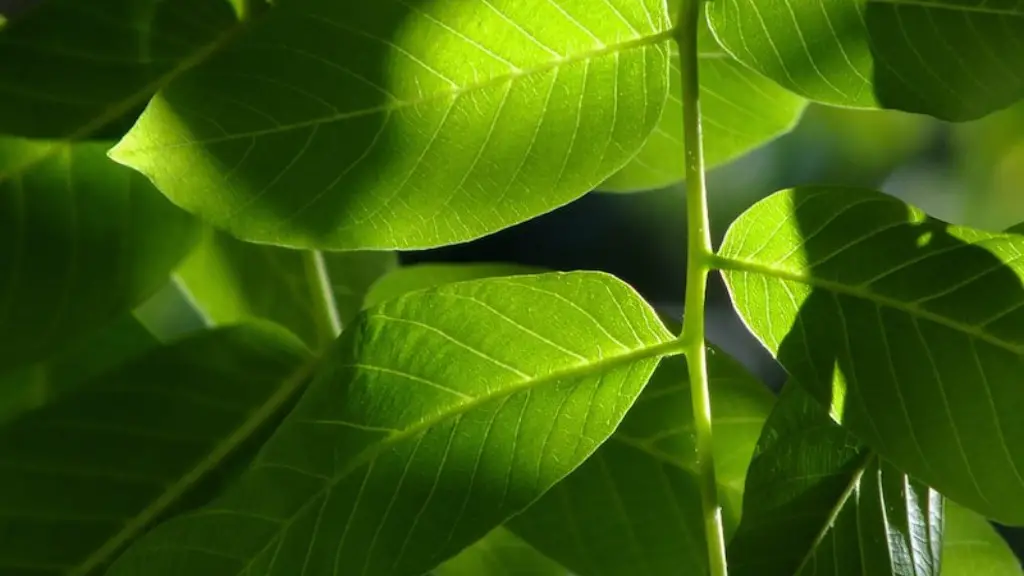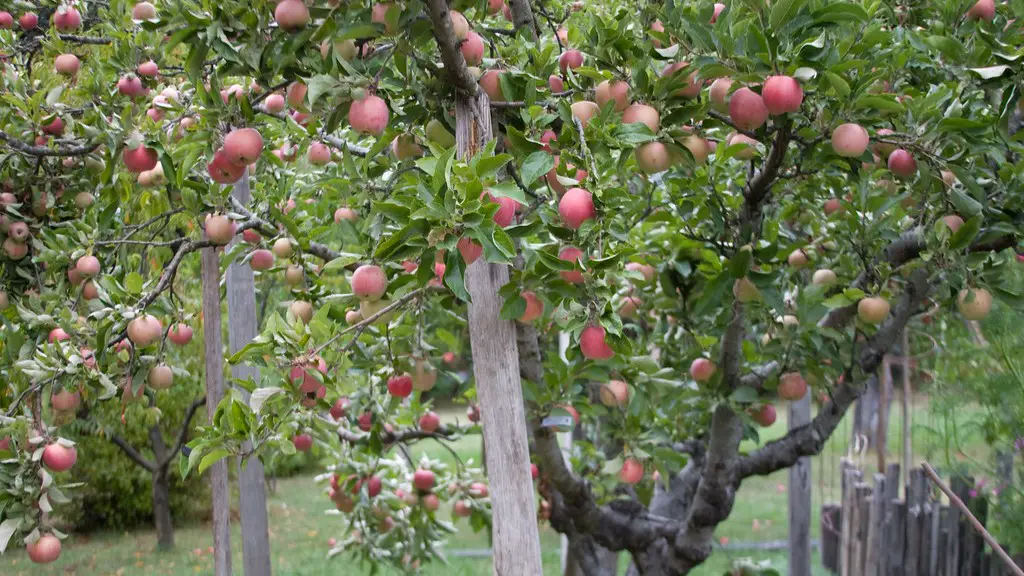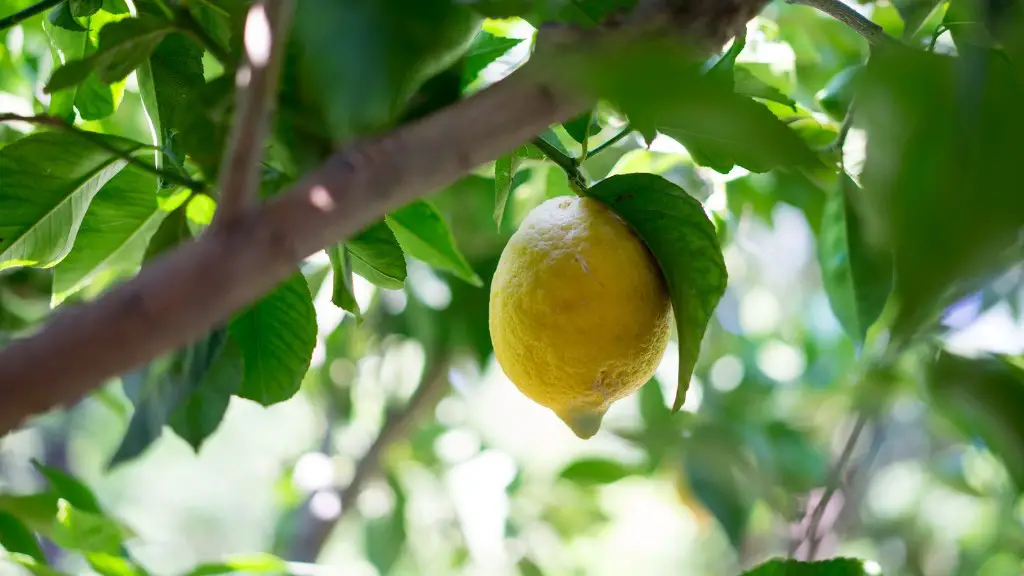There are a variety of different nuts that are classified as tree nuts. This includes nuts such as almonds, hazelnuts, walnuts, and cashews. Tree nuts are typically a good source of protein and healthy fats, making them a popular addition to many people’s diets. While tree nuts are generally considered to be healthy, they can pose a serious risk to people with allergies. Therefore, it is important to be aware of your own individual allergies before consuming any tree nuts.
There are a variety of different types of tree nuts, but some of the most common include almonds, hazelnuts, walnuts, and pistachios.
What nuts are included in the tree nut category?
Tree nuts are considered as priority allergens because they can cause severe reactions in people who are allergic to them. Peanuts are not considered a tree nut, but they are part of the legume family and can also cause severe reactions in people who are allergic to them.
A tree nut allergy is a condition in which the immune system reacts to one or more proteins found in tree nuts. The proteins that cause the reaction are found in the kernel or meat of the nut, as well as in the oil and pollen.
Most people with a tree nut allergy are allergic to more than one type of tree nut. The most common tree nut allergies are to walnuts, almonds, hazelnuts, pecans, cashews and pistachios.
Symptoms of a tree nut allergy can range from mild (such as itching and hives) to severe (such as difficulty breathing and anaphylaxis).
If you have a tree nut allergy, it is important to avoid all tree nuts and products that may contain tree nuts.
What foods to avoid with tree nut allergy
If you have a tree nut allergy, it’s important to be aware of the many potential sources of tree nuts in your diet. While nuts are often thought of as being added to desserts or as a snack food, they can also be found in a variety of other foods, including breakfast cereals, candy, crackers, cookies, chocolates, energy bars, flavored coffee, frozen desserts, marinade, barbeque sauces, some cold cuts, ice cream, alcoholic beverages (flavorings), lotions, shampoos, and soaps. While it’s not always possible to avoid all potential sources of tree nuts, reading labels carefully and being aware of the ingredients in the foods you eat can help you to stay safe.
Meanwhile, tree nuts, which include but are not limited to, walnuts, cashews, almonds, and pecans, are all produced on trees. As their name suggests, tree nuts come from trees and not from bushes, like peanuts.
Is Avocado considered a tree nut?
If you’re allergic to chestnuts, you may have to avoid avocados since they have similar proteins.
If you have a severe allergy to peanuts, tree nuts, or other allergens, please be aware that all products available at our restaurants may come into contact with these items. We recommend that you take the necessary precautions to protect yourself. Thank you for your understanding.
What is the most common nut to be allergic to?
If you are allergic to peanuts, it is important to be aware of the potential for a life-threatening reaction, known as anaphylaxis. Peanuts are the most common food allergens associated with this condition, so it is important to take precautions to avoid them.
There are several misconceptions about peanut allergies. For example, a peanut is a legume (belonging to the same family as soybeans, peas and lentils), not a tree nut. Other misconceptions include that peanut allergies are rare, that they’re only allergic to peanuts, and that they can never eat anything with peanuts in it.
What alcohol to avoid with nut allergy
If you have an allergy to nuts, be aware that there are a number of liqueurs that contain nuts. Those with almond allergies should avoid Amaretto, Amadeus, and Galliano, while people sensitive to hazelnuts should stay away from crème de noix, Frangelico, and Nocello.
A tree nut allergy is a serious, potentially life-threatening condition that should be taken seriously. If you or someone you know has a tree nut allergy, it is important to be aware of the symptoms of anaphylaxis and to have a plan in place in case of an emergency.
How do you reverse tree nut allergy?
If you have a tree nut allergy, you may be considering tree nut desensitization. This is a form of oral immunotherapy, where the patient is exposed to small doses of their allergen in an attempt to improve the body’s tolerance.
There is no guarantee that tree nut desensitization will be successful, and it is important to always carry your emergency medication with you in case of a reaction. However, if you are interested in trying this approach, discuss it with your allergist to see if it is right for you.
If you are having an allergic reaction, it is important to act quickly. First, an injection of epinephrine (EpiPen or EpiPen Jr) should be given to reduce the severity of the reaction. Second, taking liquid diphenhydramine (Benadryl) at a dose of 5 mg for every 10 lb of body weight, up to a maximum dose of 75 mg, also is recommended.
Which nut is not actually a nut
There are two types of nuts – true nuts and drupes. True nuts, like acorns, chestnuts, and hazelnuts, are not fleshy on the outside and do not have a shell covering a seed on the inside. Drupes, like cashews, almonds, and pistachios, are fruits that are fleshy on the outside and do have a shell covering a seed on the inside.
A tree nut allergy is a type of food allergy that is triggered by consuming tree nuts or products that contain tree nuts. Tree nuts include almonds, cashews, hazelnuts, pine nuts, pistachios, and walnuts. An allergy to one tree nut doesn’t necessarily mean that the individual is allergic to all types of tree nuts. Tree nut allergies can range from mild to severe and can cause a variety of symptoms, including skin reactions, gastrointestinal distress, and difficulty breathing. severe reactions can even lead to anaphylaxis, a potentially life-threatening condition. If you have a tree nut allergy, it is important to avoid all tree nuts and products that contain tree nuts.
Are bananas considered a tree nut?
Bananas are not nuts because they are classified as berries. Berries are small, fleshy fruits that have a seed or seeds inside. The seed or seeds are surrounded by flesh that is eaten by humans. Bananas are an excellent source of dietary potassium, vitamin C, dietary fiber and vitamin B6. They can be eaten fresh, or used in recipes such as smoothies, baking and breakfast bowls.
A tree nut is technically the seed of certain fruit-bearing trees. The tree nuts you’ve heard of, like almonds, walnuts, hazelnuts, pistachios, brazil nuts, pecans, cashews, etc. all grow on trees. tree nuts are Gymnosperms, which means they don’t have a flower or fruit around them. Instead, the “nut” (or seed) is encased in a hard shell.
Is coffee a tree nut
Coffee beans are actually the seeds of the coffee plant. They are harvested from their mother plant’s fruit, which is round, red and commonly referred to as a “cherry”. Many people mistakenly try to classify coffee beans as nuts, but this is also untrue.
No, oats are not considered nuts. They are a grain.
Final Words
There are a few different nuts that are classed as tree nuts. These include:
-Almonds
-Cashews
-Hazelnuts
-Macadamia Nuts
-Pecans
-Pine Nuts
-Walnuts
There are a variety of nuts that are classed as tree nuts, including almonds, hazelnuts, cashews, and pistachios. Tree nuts are a good source of protein, healthy fats, and various vitamins and minerals. They can be eaten on their own, used in baking or cooking, or turned into nut butter.





